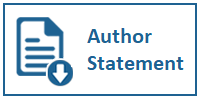VALUASI BISNIS BARU DAN OPTIMAL CAPITAL PERUSAHAAN JASA INDUSTRI (MAKLON) BAGI UMKM KERIPIK KEMASAN. (STUDI KASUS: PT KRISPINDO)
DOI:
https://doi.org/10.31937/akuntansi.v12i2.1870Abstract
The increase of MSMEs in the food and beverage industry recently experiencing significant growth, especially during the Covid-19 pandemic. According to statistical data released by the Badan Pusat Statistik (BPS) in November 2020, the food industry dominated Micro and Small businesses in 2019 for 36.23%. The increasing number of MSME businesses in this sector becomes an opportunity for the processing services industry (contract manufacturer) to help MSMEs with all limitations. This study conducted a case study on PT. Krispindo as a company engaged in processing services (contract manufacturer) in the snack sector. This research aims to assess (valuation) new business proposed by PT. Krispindo in terms of optimal use of debt and equity for the company and also investment returns that can be given to investors. In addition, this research also aims to assist the company in making decisions for the following period project, decision to continue or discontinue the business. This study used optimal Cost of Capital (WACC) and Debt-to-Equity Ratio (DER) in setting optimal business capital. To measure investment return expectations for investors, the study used the company's Net Present Value (NPV), Free Cash Flow to Firm (FCFF) and Internal Rate of Return (IRR) approaches. To find out whether or not the business is further, this study uses Terminal Value Asset (TVA) and On Going Concern Value from the business obtained when the project ending. The results prove using debt in capital has more benefit for the company and the business can continue after the projection period ends.
Keywords: New Business Valuation (NPV), Debt-to-equity ratio (DER), Average Cost of Capital (WACC), Free Cash Flow to Firm (FCFF), Internal Rate of Return (IRR), Terminal Value Asset (TVA) and On Going Concern Value
Downloads
Downloads
Published
How to Cite
Issue
Section
License
Authors retain copyright and grant the journal right of first publication with the work simultaneously licensed under a Creative Commons Attribution-ShareAlike International License (CC-BY-SA 4.0) that allows others to share the work with an acknowledgement of the work's authorship and initial publication in this journal.
Authors are able to enter into separate, additional contractual arrangements for the non-exclusive distribution of the journal's published version of the work (e.g., post it to an institutional repository or publish it in a book), with an acknowledgement of its initial publication in this journal.
















